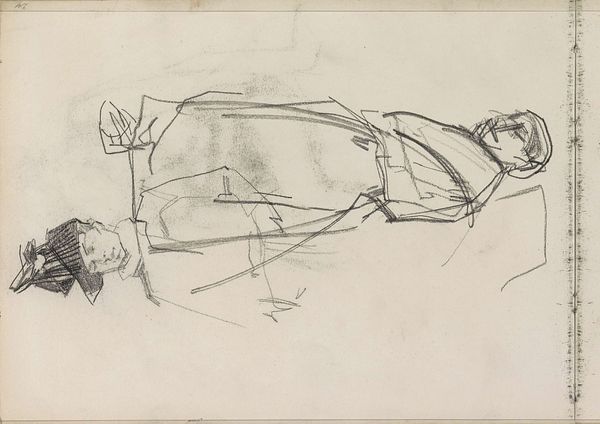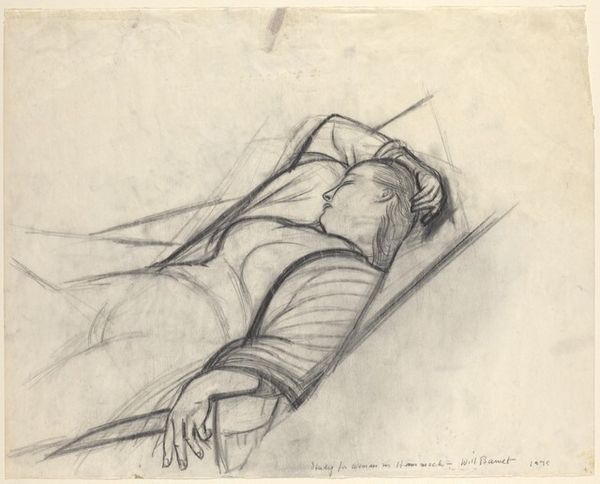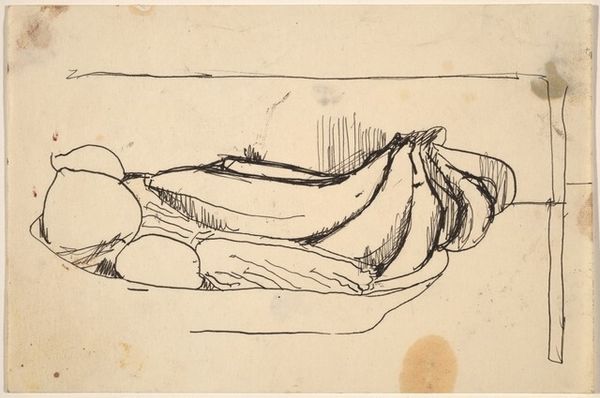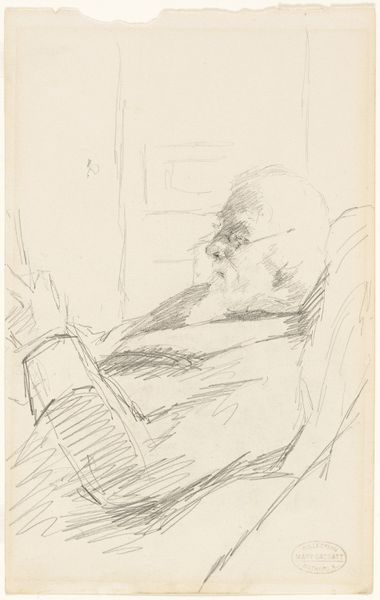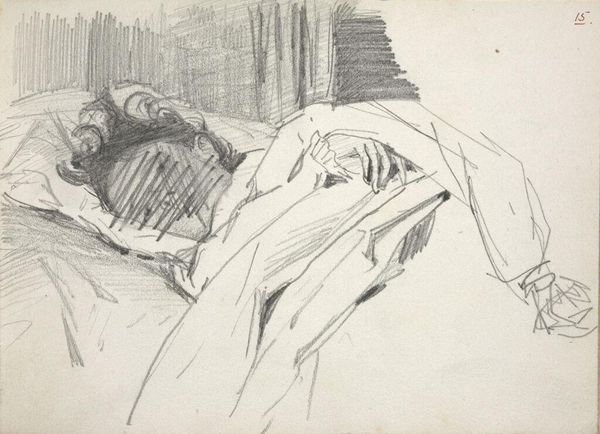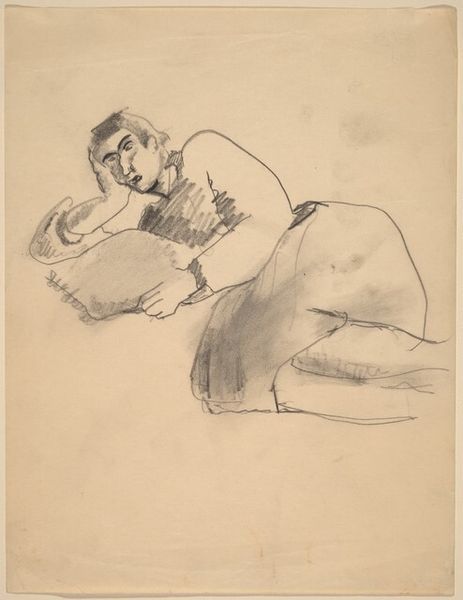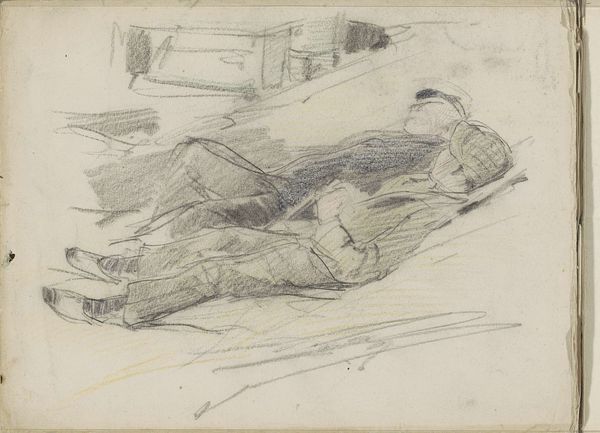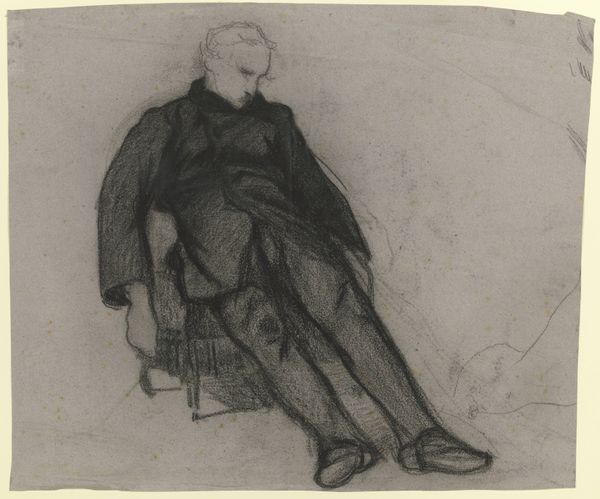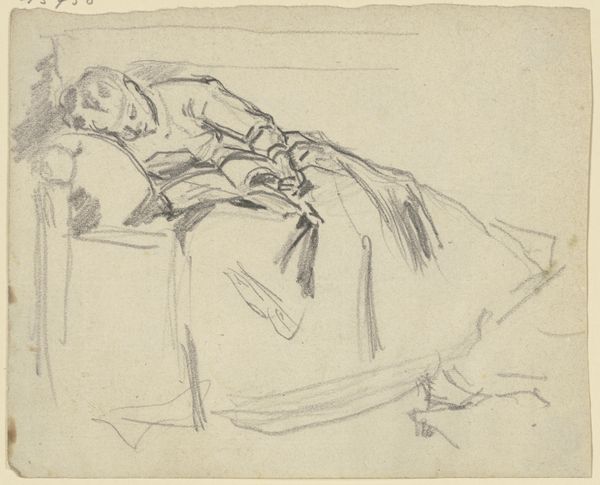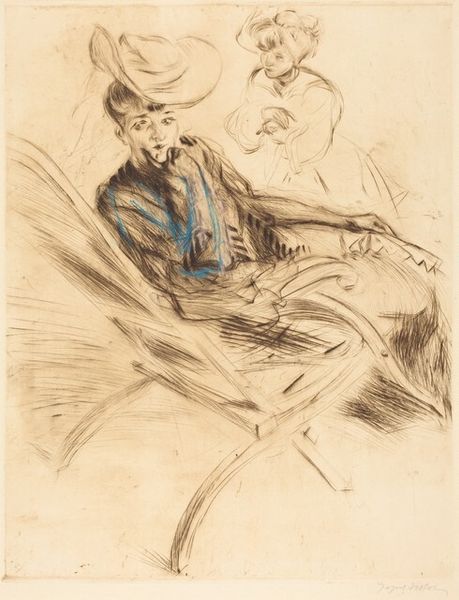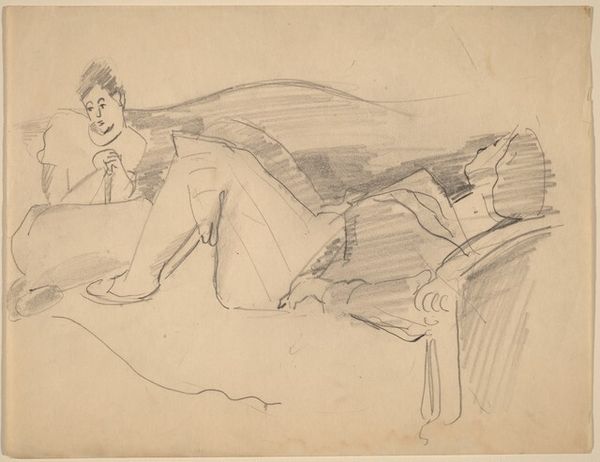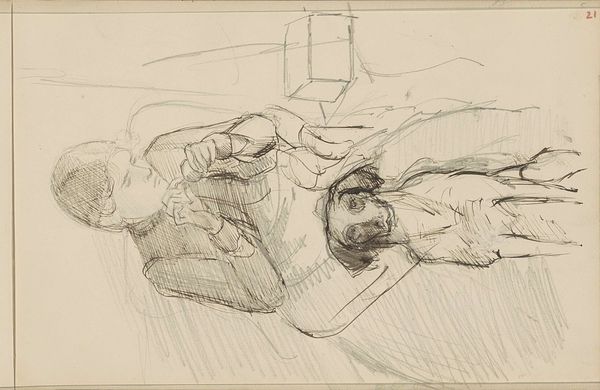
drawing, print, etching, pencil
#
portrait
#
pencil drawn
#
drawing
# print
#
etching
#
charcoal drawing
#
figuration
#
pencil drawing
#
pencil
#
portrait drawing
Copyright: National Gallery of Art: CC0 1.0
Curator: This etching, titled "Susan Resting," was completed by Francis Dodd in 1915. The subdued use of line gives the whole composition a sort of fragile peace, don't you think? Editor: Absolutely, there's a stillness that's quite striking. The artist's evident skill with the etching process adds to this delicate feel, and highlights the materiality. Look how economical the mark-making is; such thin lines create a real presence. Curator: Beyond just representation, it's the image of repose itself, one loaded with centuries of meaning, linking to mourning imagery and contemplation in portraits throughout history. That gentle, hand-to-face gesture…it speaks volumes, echoing conventional images of melancholy. Editor: The sitter's clothing looks quite ornate; her enveloping robe seems carefully depicted, almost tactile despite being a monochrome print. Its pattern and the quality of the fabric—that suggests wealth, ease, perhaps even decadence. Curator: Right, and clothes certainly communicate status and personality. Yet this positioning also alludes to classical conventions representing thinkers or muses. Does it perhaps evoke the passing of an era, viewed through the lens of early 20th century anxiety? Editor: Dodd makes a very considered and deliberate series of choices that can be interpreted through production. The controlled line-work indicates someone masterful. Each stage—from original sketch to printing— required careful planning, and that labor adds another layer to its narrative. Curator: I find the symbolism almost understated here, compared with the work of his contemporaries, yet compelling all the same. The way Dodd directs us to that introspective gaze hints at inner depths, don't you think? Editor: Yes, you're right. Thinking about his processes helps decode some of those personal reflections you’re pointing towards; for example, how repeated lines can be layered up in such a careful and slow process to emphasize mood and build the figure. Curator: What's powerful for me is seeing how historical echoes still resonate and reflect in early 20th-century depictions of daily life, prompting all sorts of cultural questions. Editor: Agreed, and that exploration, combined with understanding production, opens a new depth.
Comments
No comments
Be the first to comment and join the conversation on the ultimate creative platform.
